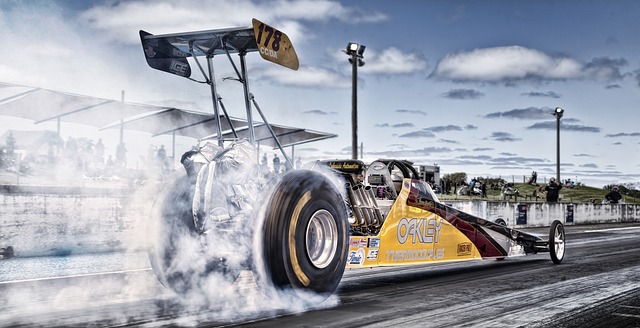Select drag racing events feature aggressive driving styles, like tailgating and high-speed cornering, which enhance performance but require understanding and safety precautions. This extreme sport, from top fuel dragsters to pro stock cars, captivates with raw speed and engineering, while highlighting human ingenuity. Despite its allure, aggressive techniques pose significant risks, prompting global regulatory bodies to implement strict measures, including penalties, safety gear mandates, and licensed professionals. Mastering these techniques, like hydraulics, aids in safer high-speed navigation, addressing key concerns in select drag racing events.
Aggressive driving styles, a growing concern on our roads, range from brisk acceleration to tailgating. This article delves into the multifaceted world of high-performance driving, focusing on two key aspects: “Understanding Aggressive Driving Styles” and “The Allure of Select Drag Racing.” We also explore safety concerns and regulatory measures aimed at mitigating the risks associated with aggressive driving, emphasizing the importance of responsible driving practices for everyone.
- Understanding Aggressive Driving Styles: A Comprehensive Overview
- The Allure of Drag Racing: Unpacking the Extreme End of Aggressive Driving
- Safety Concerns and Regulatory Measures: Addressing the Dark Side of High-Performance Driving
Understanding Aggressive Driving Styles: A Comprehensive Overview

Aggressive driving styles refer to a range of behaviors that prioritize speed and force over safety and courtesy on the road. This encompasses various techniques, from tailgating and sudden lane changes to aggressive acceleration and high-speed cornering. Understanding these styles is crucial in the context of drag racing, where drivers push their vehicles to the limit. Select drag races are not just about reaching the finish line first; they involve precise auto tuning for drag events and utilization of advanced high-speed camera tech in drag to optimize performance and safety.
Drag strip rental prices vary based on factors like track length, facility amenities, and time slots. However, regardless of these costs, drivers must grasp the fundamentals of aggressive driving techniques to ensure their own safety and that of others during such high-stakes events. By understanding these styles, both seasoned racers and enthusiasts can appreciate the art and science behind drag racing while adhering to responsible driving practices off the strip.
The Allure of Drag Racing: Unpacking the Extreme End of Aggressive Driving

The allure of drag racing lies in its raw, unadulterated speed and the intense competition it fosters. This extreme form of aggressive driving pushes vehicles to their limits, showcasing the pinnacle of automotive engineering and performance. When a top fuel dragster bursts down the strip, its powerful engine roaring, it captivates spectators with the sheer velocity and precision required to set speed records. The thrill isn’t just in the race but also in witnessing the intricate dance between driver, machine, and track.
Pro stock car competitions further exemplify the daring nature of aggressive driving. These cars, meticulously designed for speed, engage in heart-pounding battles, leaving audiences spellbound by their ability to navigate the drag strip with remarkable control. The strategic choices in tire selection play a pivotal role, balancing grip and acceleration to achieve optimal performance. This intense racing is more than just a sport; it’s a testament to human ingenuity, precision engineering, and the unyielding pursuit of speed records.
Safety Concerns and Regulatory Measures: Addressing the Dark Side of High-Performance Driving

The allure of high-performance driving, often associated with thrilling experiences like drag racing, hides a darker side when safety is compromised. While many enthusiasts appreciate the precision and skill required in these activities, it’s crucial to acknowledge the potential risks on the road. Aggressive driving styles, especially in organized events, can lead to severe accidents, posing significant threats to participants and bystanders alike.
Regulatory bodies worldwide have implemented strict measures to curb dangerous driving practices. These include stringent rules for drag racing penalties and regulations that govern event organization. For instance, many countries mandate the use of safety gear, proper track conditions, and licensed professionals to oversee such events. Moreover, understanding basic drag racing techniques 101, such as the role of hydraulics in drag cars, can help drivers navigate these high-speed challenges more safely. These precautions are vital steps towards mitigating the risks associated with extreme driving styles.
Aggressive driving styles, as explored through the lens of both drag racing and safety regulations, highlight the fine line between passion for performance and public safety. While events like select drag racing capture the thrill-seeking essence of aggressive driving, it’s essential to recognize the inherent risks. Regulatory measures aimed at ensuring safer roads underscore the importance of striking a balance between driver expression and preventing reckless behavior. By understanding these dynamics, we can foster a culture of responsible high-performance driving, ultimately enhancing both the enjoyment and safety of our transportation networks.
